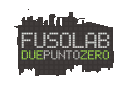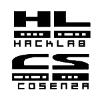Perchè abbiamo scelto Ad-Hoc ?
La diatriba è molto complessa Ad-Hoc con routing OLSR (come Freifunk.net http://www.olsrexperiment.de) oppure modalita Infastructure con link WDS e gestione della rete mesh a layer 2?
Pro e Contro:
Ad-Hoc
- configurazione semplice: ogni access point lavora con un solo ip
- autoconfigurazione della rete: i nuovi link si creano da soli. Basta accendere il nuovo apparato e configurarlo.
- non occorre impostare i mac address per creare i link WDS
- ben supportato dal protocollo OLSR.
- introduce dell'overhead in rete e sembra leggermente più lento
- utilizza una metrica radio-aware, la ETX, sfrutta al massimo ogni link della rete
Infrastructure
- Non introduce molto overhead. Da risultati sperimentali sembra leggermente più veloce.
- configurazione molto complessa: ogni link con un altro access point necessita della conoscenza del mac address, ogni volta che si aggiunge un nodo i nodi vicini vanno riconfigurati.
- ogni apparato configurato ha bisogno di una subnet IP da riassegnare
- spreco di ip e difficoltà della gestione della numerazione
- gestione dei cicli nella rete mesh da parte del protocollo STP 802.1D, che non utilizza una metrica radio aware ed lascia alcuni links inutilizzati come risorsa di backup
La scelta!
Settembre 2006 Tutta TuscoloMesh è stata ricostruita interamente in modalità Ad-Hoc con protocollo di routing OLSR. Abbiamo trovato un bug di STP 802.1D per cui in caso di links radio asimmetrici si formano nei cicli nella rete ethernet! broadcast storm! per maggiori dettagli scrivete a ZioProto
Saverio








